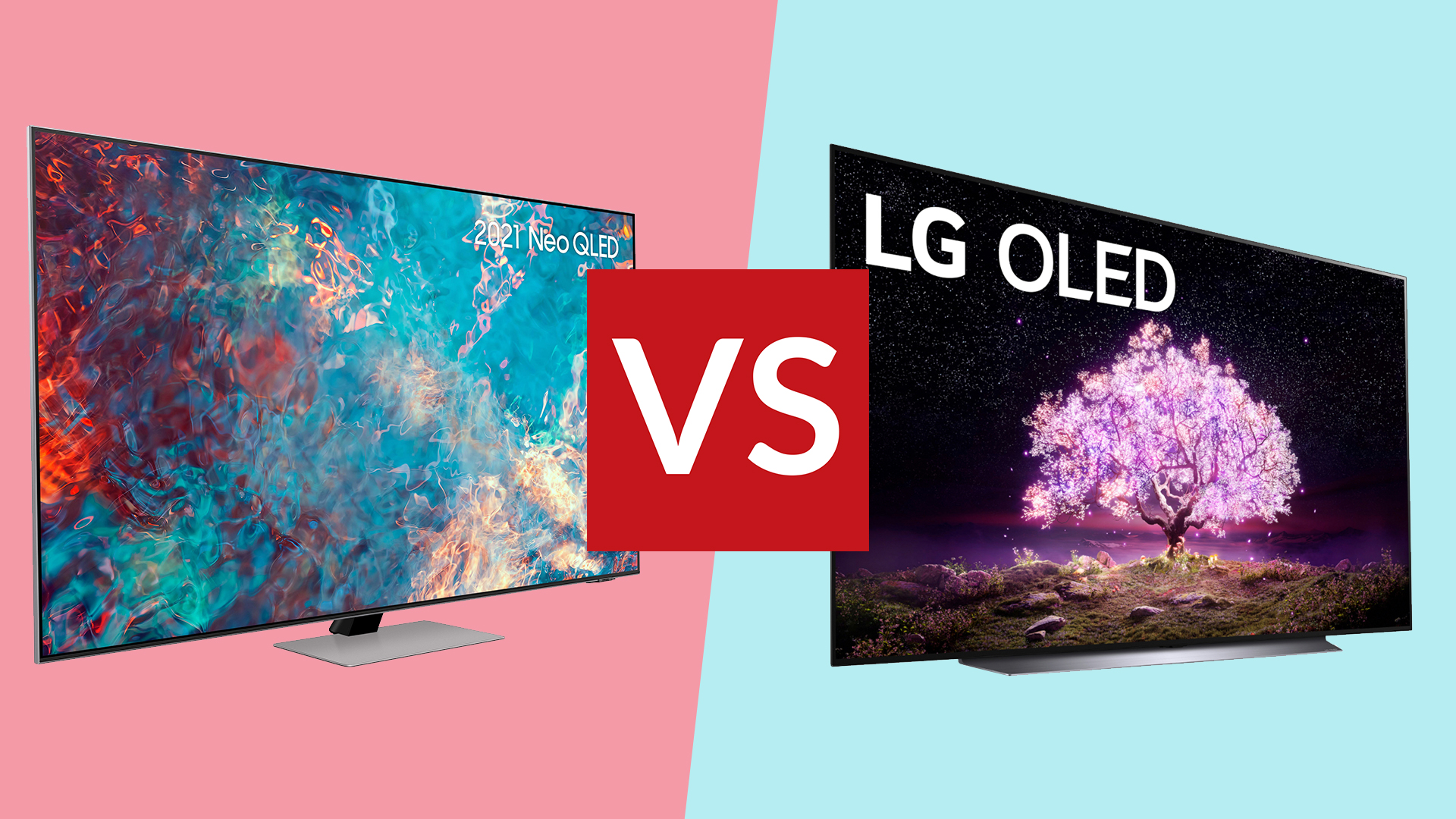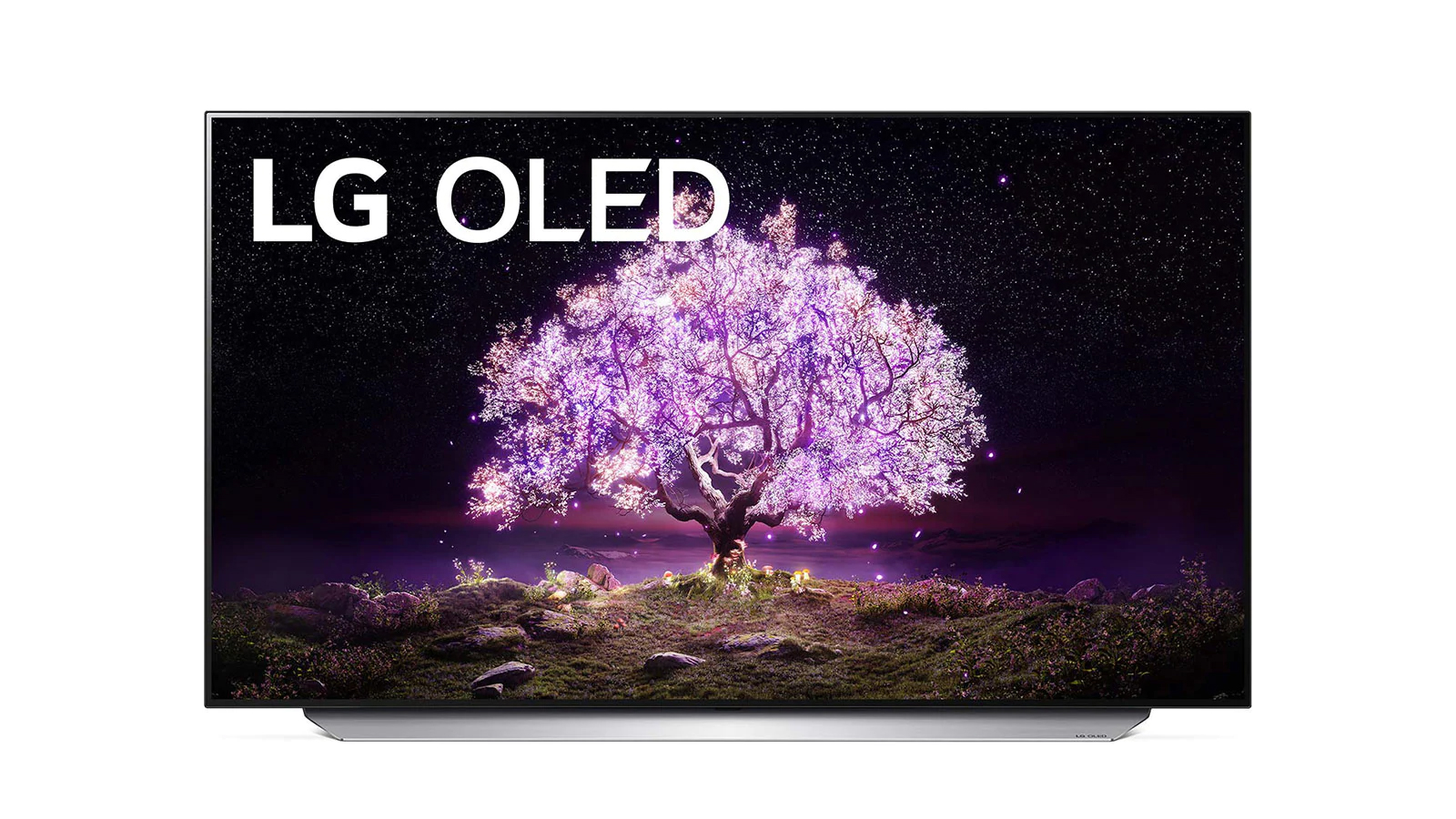Samsung QN85A vs LG C1: which 4K TV stunner is best for you?
Samsung's QN85A and LG's C1are two similarly priced TVs, but using totally different screen technologies. Here's how they compare


If you're looking for a new TV this year that has elite TV tech but is still at the affordable end of the price spectrum, you'll probably end up looking at the Samsung QN85A vs LG C1 – two of the biggest TVs of the year from two of the biggest TV brands.
The Samsung QN85A is the lowest-priced model for the company’s new range of Neo QLED TVs, which use cutting Mini-LED technology for massively improved contrast. It's price pits it directly against the LG C1, which is the mid-range OLED TV in that company’s 2021 line-up, and is the 'sweet spot' of picture quality, features and price.
Both are likely to be among the best TVs of 2021 when it comes to balancing price and cinematic prowess, and in particular they're in hot contention to be among the best 55-inch TVs.
In fact, we've already got our full LG C1 review, and that's immediately made clear that it's one of the best OLED TVs of the year.
Both of these TVs offer cutting-edge performance and extensive features for a similar cost, but which one is best for you? Let's look at the their differences.
Samsung QN85A vs LG C1: Price & screen sizes
As the entry-level Neo QLED model, the Samsung QN85A benefits from competitive pricing, with a range of larger panel sizes. The available options include 55-inch ($1,599/£1,799/AU$3,049), 65-inch ($2,199/£2,499/AU$3,999), 75-inch ($2,999/£3,799/AU$4,699) and 85-inch ($4,499/£4,999/AU$6,799) screen sizes.
The mid-range LG C1 offers generally similar screen sizes, but also includes a 48-inch model ($1,499/£1,299/AU$2,999). The other options are 55-inch ($1,799/£1,699/AU$3,499), 65-inch ($2,499/£2,499/AU$4,699), and 77-inch ($3,799/£3,999/AU$8,999) versions, with an 83-inch (AU$12,599) model due later in the year.
Get all the latest news, reviews, deals and buying guides on gorgeous tech, home and active products from the T3 experts
Samsung QN85A vs LG C1: Design & connections
The Samsung QN85A might be the entry-level model when it comes to Neo QLED, but it retains the eye-catching minimalist design of more expensive Samsung TVs, and the slim panel thanks to the new Mini-LED backlight. There’s virtually no bezel, and the silver brushed-metal stand provides solid support.
The connections at the rear include four HDMI 2.1 inputs, with eARC and all the latest gaming features such as 4K 120Hz, Variable Refresh Rate (VRR) to stop frame tearing in games, AMD FreeSync, and ALLM to automatically switch the TV into the low-latency game mode. Other connections include USB ports, an optical digital output, a line output, and an Ethernet port, along with Bluetooth and dual-band Wi-Fi.
The LG C1 sports an attractive design with an angled stand, and thanks to the self-emissive nature of OLED panels, it's incredibly thin at the top and has virtually no bezel. The panel widens out towards the bottom where the electronics, speakers, and connections are housed.
The latter includes four HDMI 2.1 inputs, one with eARC, while all of them handle the latest gaming features such as 4K 120Hz, VRR, AMD FreeSync, Nvidia G-Sync, and ALLM. Additional connections include USB ports, an optical output, a line output, a headphone socket, and an Ethernet port, along with Bluetooth, and dual-band Wi-Fi.
There's very little to choose between them in this sense.

The LG C1 uses OLED self-lighting pixels to dramatic HDR effect.
Samsung QN85A vs LG C1: Picture quality
The Samsung QN85A uses the company’s new Neo QLED technology, which employs local dimming and a Mini-LED backlight to deliver increased brightness and improved contrast compared to regular LED TVs. The application of quantum dots also produces a wider colour gamut, and the result is superior HDR performance than most LCD TVs.
We've seen what the New QLED panel can do on a 4K screen in our Samsung QN95A review, which is the model up from this one – that set is incredibly impressive. The QN85A doesn't have quite as advanced a panel as that model – it's less bright, and has fewer dimming zones – which is no surprise, since it costs less.
The QN85A supports HDR in the form of HDR10, HLG and HDR10+, but not the widely used Dolby Vision format – this continues to be an annoying downside of all Samsung's TVs.
The Neo Quantum Processor 4K uses deep-learning algorithms to ensure the picture is always optimal, while the Filmmaker Mode retains creative intent. A new Game Bar curates all the gaming features into a single convenient place, and the input lag is 9ms.
The LG C1 boasts a comprehensive set of features, with support for HDR10, HLG, and Dolby Vision IQ, but not the HDR10+ format (which is equivalent to Dolby Atmos, but less widely used).
The C1 includes the α9 Gen4 AI-enhanced processor, which also uses deep-learning algorithms to analyse and optimise content, before automatically adjusting the picture as necessary. The result is a superb 4K performance, effective upscaling, and motion enhancements, plus the C1 also has Filmmaker Mode for improved image accuracy. Our LG C1 review said that "Picture quality is outstanding with both native 4K and upscaled HD," and "The C1 delivers lots of ‘wow, that’s better than last year’ moments. Motion handling is particularly noteworthy, courtesy of some clever new image interpolation techniques."
This TV is another great choice for gamers, with the new Game Optimiser collating all the gaming options in a single useful interface, and delivering a similarly impressive 9ms input lag.

The Samsung QN85A has multiple speakers around the edges of its thin screen, for expansive audio.
Samsung QN85A vs LG C1: Sound quality
The Samsung QN85A uses Object Tracking Sound, which is composed of six built-in speakers, allowing sounds to be steered around the screen to match the action. This added sense of sonic dimensionality is combined with AI Sound to produce an acoustic experience that’s tailored to your environment.
There’s no onboard decoding for Dolby Atmos, though the TV can pass it from its app to a connected soundbar or AV receiver.
A clever feature called Q Symphony can make the TV speakers combine with compatible Samsung soundbars so that they all work together even more immersive audio.
The LG C1 uses a 2.2-channel sound system with 40W of amplification, and thanks to the α9 Gen4 AI-enhanced processing the TV analyses the audio signals and creates a more immersive sonic experience using a pseudo 5.1.2-channel delivery.
There’s also the bonus of onboard Dolby Atmos decoding, which produces greater immersion through added width and height, thanks to the same psychoacoustic processing, when played through speakers that make the most of it. The resulting audio is not bad for a panel this thin.
We think most people will find the Samsung more impressive overall out of the box for sound, but both TVs would benefit from adding one of the best soundbars.
Samsung QN85A vs LG C1: Smart TV
The Samsung QN85A sports the company’s Tizen-derived smart TV system which is employed on every QLED TV up to and including the flagship models. It’s launcher bar is slick, responsive, informative and very intuitive to use, with a choice of every essential catch-up and streaming service.
There’s a solar-powered remote, and a Universal Guide to make finding content easier, along with Alexa and Google Assistant.
The LG C1 sports latest version of webOS, which now uses a full-page home screen, rather than a launcher bar at the bottom. There’s also a revised user interface and menu system, plus a redesigned magic remote. The smart platform includes all the main streaming services, as well as Freeview Play in the UK, ensuring a comprehensive choice for users. There’s also built-in Google Assistant and Amazon Alexa, turning the C1 into a fully-functioning and system-agnostic smart speaker.
Samsung QN85A vs LG C1: Conclusion
The Samsung QN85A might be the entry point to the company’s Neo QLED line-up, but it still boasts a comprehensive smart platform and blisteringly bright HDR images. AI-enhanced processing gets the best out of the picture and sound, while a host of features make this TV ideal for gamers (and unlike OLED there’s no risk at all of screen burn). The lack of Dolby Vision disappoints, though, and it still isn't able to match OLED's individual pixel lighting for sheer precision in contrast.
The LG C1 remains one of the best-performing and attractively-priced OLED TVs you can buy, with exceptional picture and sound, α9 Gen4 AI-enhanced processing, impressive smarts, and plenty of useful features such as the Game Optimiser, a revised version of webOS, and 5.1.2-channel sound processing.
The LG has the edge when it comes to cinematic images for viewing in dark rooms, thanks to OLED's performance with dark areas. However, if you'll watch a lot in a sunny room, the brightness of the Samsung is likely to cut through better.

Steve Withers is a professional calibrator and freelance journalist who regularly contributes to T3, reviewing audio and video products, and writing articles. Steve has been writing about audio and video products for over ten years and, along with T3, he also contributes to TechRadar, Trusted Reviews, Expert Reviews, AVForums, Pocket-lint, Home Cinema Choice, and Wired. Steve is Level 2 certified with THX, the Imaging Science Foundation (ISF) and the Home Acoustics Alliance (HAA). As such, he remains abreast of all AV technology developments and the latest industry standards as we transition into a new era in home video and audio.